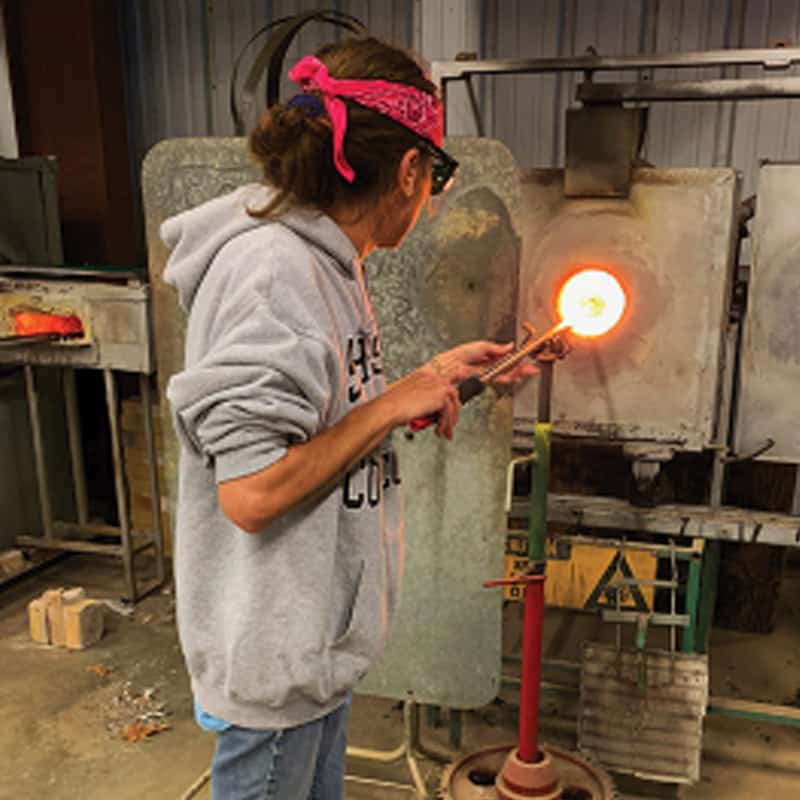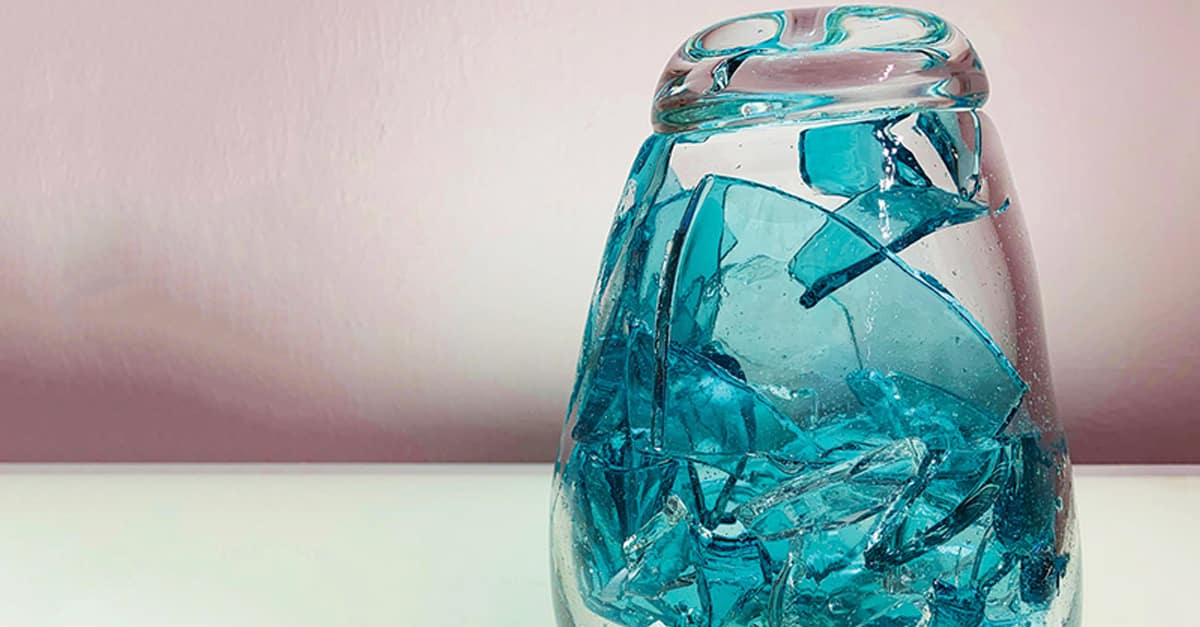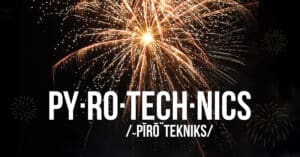The Glass Program At Shasta College
Hot Shop…
A 1,500-degree glob of glowing glass can be transformed into something of function and beauty – a vase, tumbler, bowl. Then again, it might flop to the floor and end up a bungled blob.
Working with molten glass is tricky. Shasta College in Redding teaches hot-glass skills through a unique program that goes back 50 years. Its longevity is matched by only one other California community college glass program.
Shasta College offers three glass classes: beginning glass, glass blowing and sculptural glass. Students reflect a mix of ages and interests. Some pursue glass skills as part of a degree or career plan, others as a hobby.
Kayla Gitchel enrolled at Shasta College after high school with no specific educational goal. A friend talked her into taking a glass class. “My first dip in the furnace, I was sold,” she says. “It is so challenging.”

After earning her associate’s degree, Gitchel transferred to Chico State University where she’s in her third semester working toward a bachelor’s degree in studio art with an emphasis in glass art. She plans to build on that with a master of fine arts. “I really want to teach,” she says.
Shasta College nursing student Aida Kowalski took a glass class as an elective because it sounded fun. “It’s a lot harder than I thought. There’s a lot of problem-solving. You have to think fast. Once it clicks, it’s the best feeling ever.”
Robbie Ednilao, a high school sophomore taking the class as part of an independent study program, likes learning “exactly what the glass will do and how to control it.” Ednilao also likes that glassblowing is something not a lot of people know how to do.
Mark Grant, a retired home builder, enrolled to try something new. “When you are blowing glass, you are totally in the moment, you can’t think of anything else. I love it,” he says.
Instructor David Gentry says hot-glass classes are not a typical community college offering. “I’ve had students come from Alaska and Wyoming to take classes here – pretty much all over the place.”
Unlike creating a drawing, painting or sculpture that can be worked on over hours, days or months, making something with hot, viscous glass is immediate. It demands speed and quick reactions. “It’s mesmerizing,” Gentry says. “It’s like a dance. You are timing everything. It has to go from the right place at the right time.”
Chris Unger is the program’s instructional paraprofessional, assisting in the hot shop where students use blow pipes, punty rods, furnaces, molds and ovens. His passion for glassmaking started 10 years ago when he took a class from Gentry. “I’ve been hooked ever since,” Unger says. He transferred to San Jose State University, earning a bachelor’s degree in studio art, and then got the paraprofessional job. He also has a small business, Unger Glass.
Safety is a priority in the Shasta College program. Students are required to learn protocols before they can work in the hot shop. Some of the equipment goes back to the program’s earliest days.

Clif Sowder started the glass program in the late 1960s. Palomar College in Southern California launched a hot-glass program at the same time. In that era there were few options for purchasing glass furnaces, so Sowder led the students in building their own. “There was so much enthusiasm from the students. I always had a great gang hanging around wanting to work on all sorts of projects,” Sowder says. The glassmaking facility “wasn’t much more than an open shed to keep the rain off of us as we worked.”
Many of the early students were Vietnam War veterans, Sowder notes. Creating art with glass can be therapeutic. It encourages creativity, as well as mindfulness, patience and resilience. “I can’t possibly imagine all the way it changes situations. It’s pretty amazing. I’m just proud of what the students involved in that program were able to go on and contribute in the world of glass and art and their own creative energies,” Sowder says.
Shasta College glass students have opened studios, become teachers and gotten jobs in glass production.
Sowder led the glass program for more than three decades. He also taught photography. When he retired in 2004, the glass classes ended.
Gentry was hired in 2006 to teach ceramics, sculpture and art history. After arriving, he noticed the mothballed hot shop and learned the history of the glass program. Gentry, who has a background in glass art, including a master of fine arts in glass, pushed to bring the program back. It was revived in 2007.
“I think Shasta College is unique for offering this medium. Hopefully it will be around for a long time to come,” Gentry says. •




